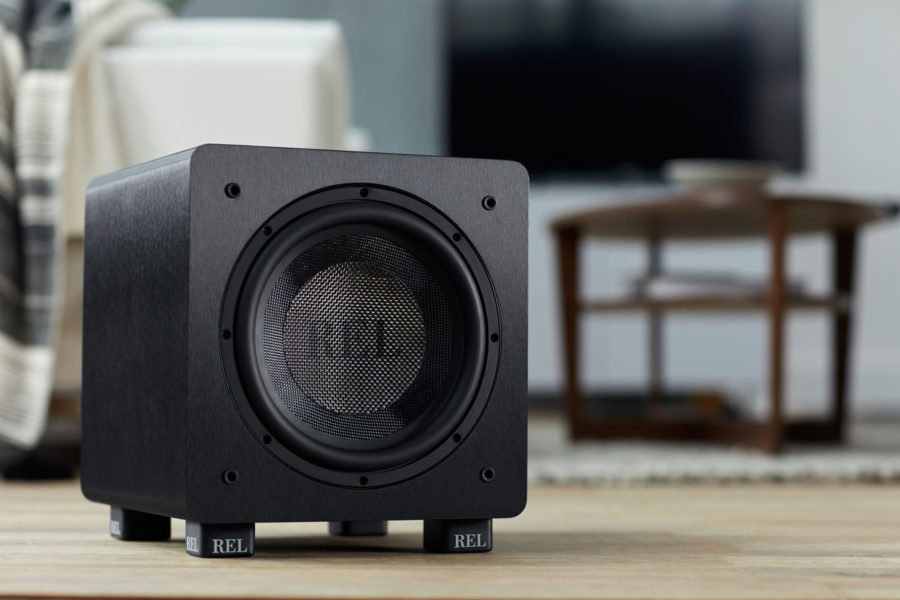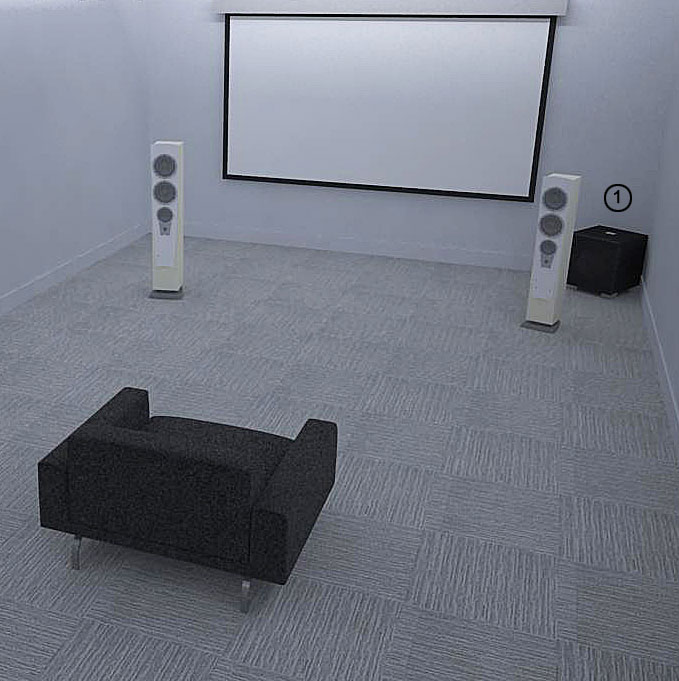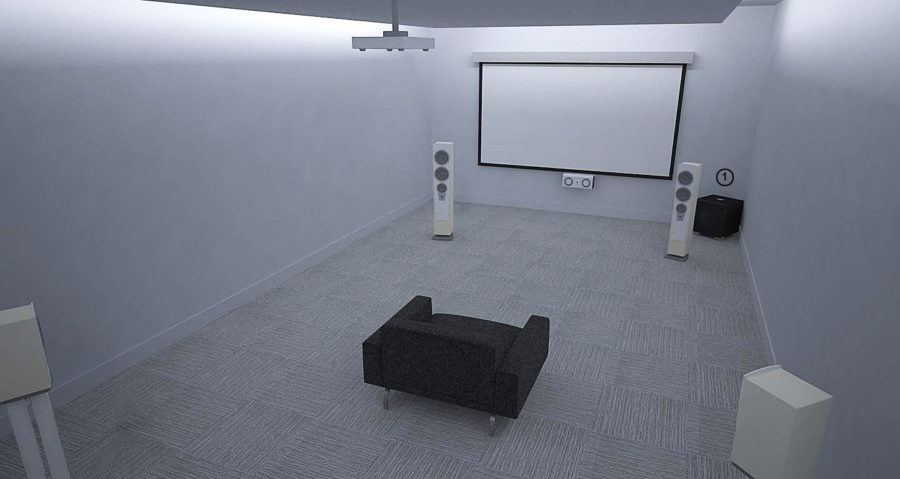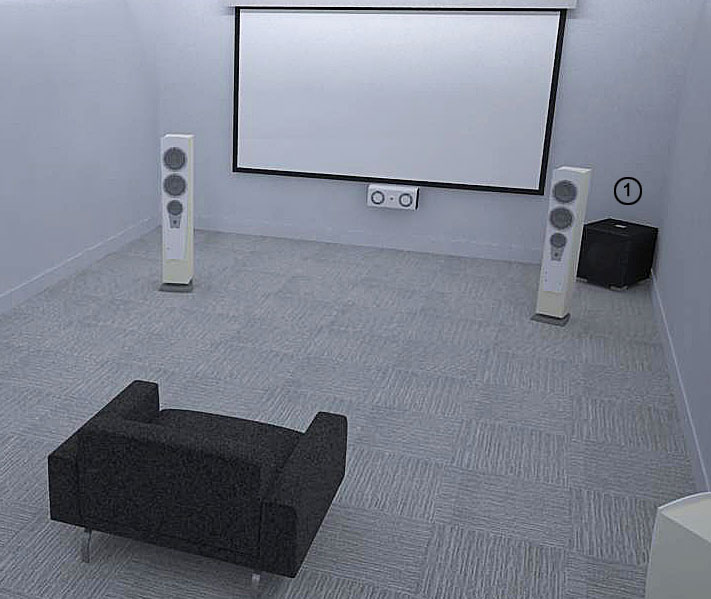Blog
The Basics of Home Theater Part 1
Tips to Begin Your Home Theater

Starting off in the world of theater can easily become overwhelming. We thought you should be armed with the necessary information to simplify what can easily become an overly complicated and expensive process.
The thing to remember, is that building a home theater can be incredibly fun and rewarding. But it works best if you approach it with the understanding that you don’t need to buy it all at once, it’s actually more fun that way and you’ll make better decisions as you go along. It also allows your budget to deliver more quality and buy less confusing gear that—to be honest—you’re not truly sure what to do with or how to get the most out of it right from the start.
Here are the keys to building a home theater system that I would share with a good friend looking to get started ––showing the evolution from most basic to fulfilling a fully-sized functioning high-quality-on-a-budget 5.1 home theatre:
Three Things You Need to Know Before You Begin:
First step is to get clear on three key pieces of information

1. The space you’re using for your theatre; small, medium or large
2. How loud you truly plan to run your theatre and
3. How much do you also care about the quality of music reproduction when your theatre isn’t being used to watch movies.
Pro Tip – For Smaller Spaces, 2.1 Can Offer More Than 5.1
Is your space on the smallish side? Whether a modest apartment, a city pied a terre, or a simple flat screen hung in a master bedroom, not all theatres need to feature 5 (or more ) speakers and a matching number of amplifier channels. Knowing your space is crucial. If it’s a small flat in a big city, you likely won’t require any more than 2 channels, 2 speakers and a quality subwoofer. If your flat panel isn’t larger than 70” you may not need a center channel (even though center channels are considered a key ingredient). Why? Because most modern small 2-way speakers with 5.25”/15mm bass drivers (and larger) will setup properly at 7-8’ of width and produce a large, dynamic and articulate sound that can easily fill the center space between them with what is referred to as good imaging. This refers to the ability for two speakers to fill in the space between them with a 3-dimensional aural stage.
Focus On Quality
95% of the people buying large multi-channel receivers have little-to-no idea what to do with all those channels and wind up leaving them set to Small and with zero adjustment to the delays per channel. If you don’t know what that means, you may well find the whole multi-channel world of advanced home theatre frustrating and you’re not alone. When in doubt, go for quality and fewer speaker channels, rather than many channels with all the complexity that entails.
The thing to remember is two high quality speakers, a high quality AVR and a quality subwoofer will form the bones of a very good theatre.

Buy Real Speakers from Real Speaker Companies
For starters, beware of famous name brand TV and electronics brands offering loudspeaker/subwoofer combos (these often offer a wireless “subwoofer”—that makes no bass below 60 Hz where real bass begins) at super cheap prices. Theater-like sound is the whole point of home theater, so these cheap offers of audio junk ought to be avoided at all costs.
People whose sole business it is to make speakers tend to make nice sounding speakers, while huge corporations who make (and lose) billions of dollars/pounds of tv’s each year tend to make awful-sounding stuff. Companies that make fine AVR receivers or tv’s should sell you a fine AVR or tv. Don’t waste a penny on their loudspeakers or subs out of convenience, experience is what we’re creating.
Right Size Your Receiver
So, if you find you’re in the small room theatre camp, using a smaller/lower powered receiver makes sense since much of the sophistication in AVR’s comes from the complex Dolby-based decoding of multi-channel sound. Personally, I’m more in the camp of allowing my system to grow so I would go with a decent, but relatively inexpensive Yamaha or Onkyo AVR (Arcam if you have a much larger budget). Note that in recent years, it appears that Marantz and Denon receivers no longer permit full range when in theatre mode, which limits the natural dynamics that are such a big part of the fun when you watch movies.
Pro Tip
If you value music and movies and know you will never have room to expand into true multi-channel digital theatre 5.1 and larger, Yamaha makes a 2-channel receiver called the R-S202 that sells for around $149 US and around £200 in the UK. Huge bargain, a quick glance inside suggests that the bones of this unit may originate in their classic entry level receivers of the late ‘90’s which means well-built Class A/B amplifier channels and big power supplies. But be clear, buy this only if you do not plan to explore true multi-channel theatre in the future and just want quality at an incredible price you can use to play music and movies on.
Setup is Everything in Theatre
Now it’s time to set things up. Try careful positioning of the speakers, point them almost at your prime listening position (great starting angle is with the inside edges of a rectangular speaker box pointing at a location about 18” (half a meter) behind your head. Move them out away from the rear wall behind the speakers and separate them by at least 7’ (2 meters) for smaller speakers and considerably wider for larger–easily up to 10’ (3M) between inner edges of your speakers for larger full range speakers.
To dive deeper into suggested room setups, visit our theater guide.
Set the menu on your AVR Speaker Setup to Large (Full Range on some brands) and try your hand at listening, first at moderate volume levels until your gear warms up and you can tell with certainty that you’re not in danger of overdriving anything. If you hear any sort of distortion or harsh sounds, turn it down immediately. Gradually you can experiment with running the volume up to levels anyone would consider loud.

Adding a Center Channel
So, you’ve started a high quality, yet affordable small beginner theatre based on 2.1 channels. Assuming most of you are in the camp of building toward a full-blown 5.1 (or larger) theatre the next step is to add a matching center channel. It’s important that it match your main speakers so don’t skimp. If your speakers are in a price category such that the center channel is either too small or too large, step up and get the better center channel. It’s an incredibly important channel, responsible for dialogue intelligibility and locking clarity onto the screen.
Pro Tip
Almost every home theatre I have ever experienced has the center channel set too loud. The result is what sounds like a big, loud mono speaker with lots of noise coming from the center and almost nothing from the L-R main speakers.
Try reducing the volume using just your ears (select Manual for setup, not Room Correction) and listen carefully to the loud hissing, which allows you to set each channel’s level. You can buy a level meter and undoubtedly someone makes an app to do so, but try listening. You do it everyday, you make life and death decisions with your ears, you are built for this. Listen to the hissing sound from each of these front channels while running Level Check on your AVR—they will all subjectively sound different but try to focus on achieving approximate balance.
Resist the temptation to adjust Right and Left speaker volumes. Listen to the center speaker relative to the other two main speakers and adjust the volume up or down as needed until it seems to match both pretty evenly. Often, the center channel will need to be turned down in volume. If you do so properly, the sound of all the scene behind and around the main actors will take on life and physical volume as the scene becomes truly 3-dimensional. I just did so myself earlier today (bought a matching center channel to go with some legendary speakers I own) and was struck anew by how, as the center channel sinks into the soundstage created by the main speakers, the scenes come to life in an altogether far more interesting and realistic manner.
Advice on Built-Ins
Many of you will consider using in wall and especially in ceiling speakers. Awesome for background music, a disaster for the front channels in a theatre. Don’t do it.
Sound, particularly the spoken word (dialogue is awfully important to movies) is critical to direction. This means for speakers to work well in the front three speakers (Left, Center, Right) they must point at you. In-wall speakers can accomplish this, but generally miss the ability for both bass and treble drivers to toe-in (angle inward) toward the main seating/listening position.
But in-ceiling speakers are a complete disaster for the main Left-Center-Right speakers in a theatre or for high quality sound precisely because they point straight down. You hear these words a lot in houses with in-ceiling speakers: “What?” “What did he say?” “Can you turn it up?”
So I Hate In-Ceiling Speakers Right? To the contrary, I love ‘em in the right application. For background music wafting throughout a home, they provide a sense of luxury that is hard to beat.
In ancient times, the truly wealthy had soft fountains gurgling and tinkling throughout a palace—in-ceiling speakers can deliver some of that same sense of ease and luxury to one’s home.
Pro Tip

Use a tiny REL Tzero MKIII wired using our High Level Connection to those rooms that matter like the dining room for a real breakthrough in sound quality.
In-Ceiling speakers work really well for surrounds, especially side surrounds in 7.2 setups and wonderfully well for Atmos. These are more advanced versions of theatres and we’re getting a bit ahead of ourselves. Bottom line, use real speakers (can be small ones on stands—ideally 6.5” 2-ways or larger floor standers for your main speakers). If you simply have no room, then consider shelf-mounting those same speakers. Last fall back is to use in-wall speakers that at least maintain some of the directional cues of a free-standing speaker. Save the in-ceilings for surrounds and background spread.
Nail The Basics
These are the home theater basics that provide a solid foundation for building up from. In the next Installment we’ll take up the topic of surrounds and how to position them, provide some tips on alternate methods to 7.2 that deliver far more of what movies can offer.
Click here to read the second piece in this series, Home Theater Basics Pt. 2
We’re here to help you get much more out of your favorite movies at home, so don’t hesitate to reach out and visit our other home theater resources.
Getting the Most out of Your HT: Tips from the World’s Pickiest Setup Artists
How To Tune A Subwoofer: Learn How To Optimize Your REL The Same Way The Pros Do It.
Be A Theater Pro: 5 Tips To Build Theater Sound The Way the Pro’s Do
Home Theater Subwoofer Placement Guide










